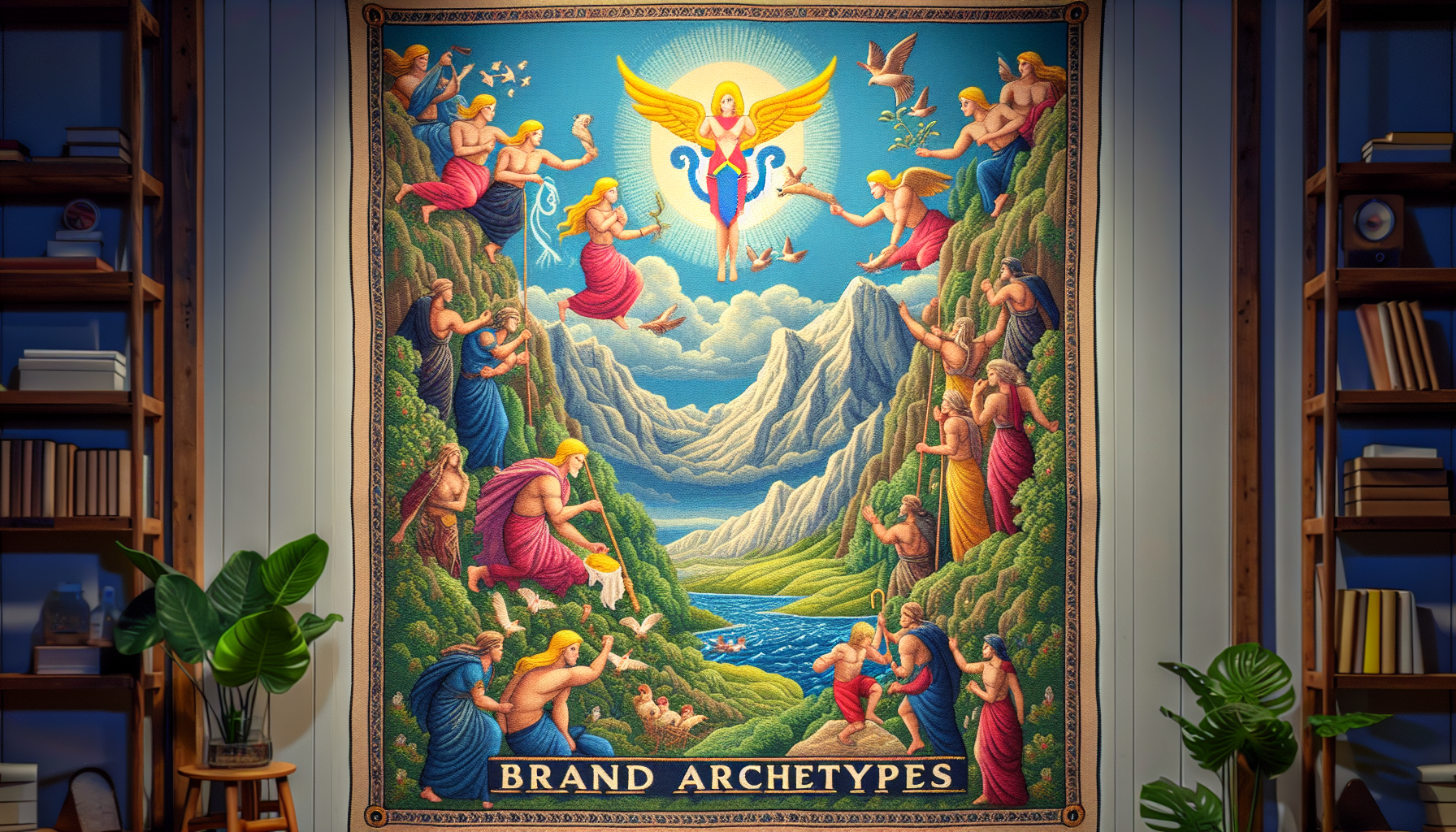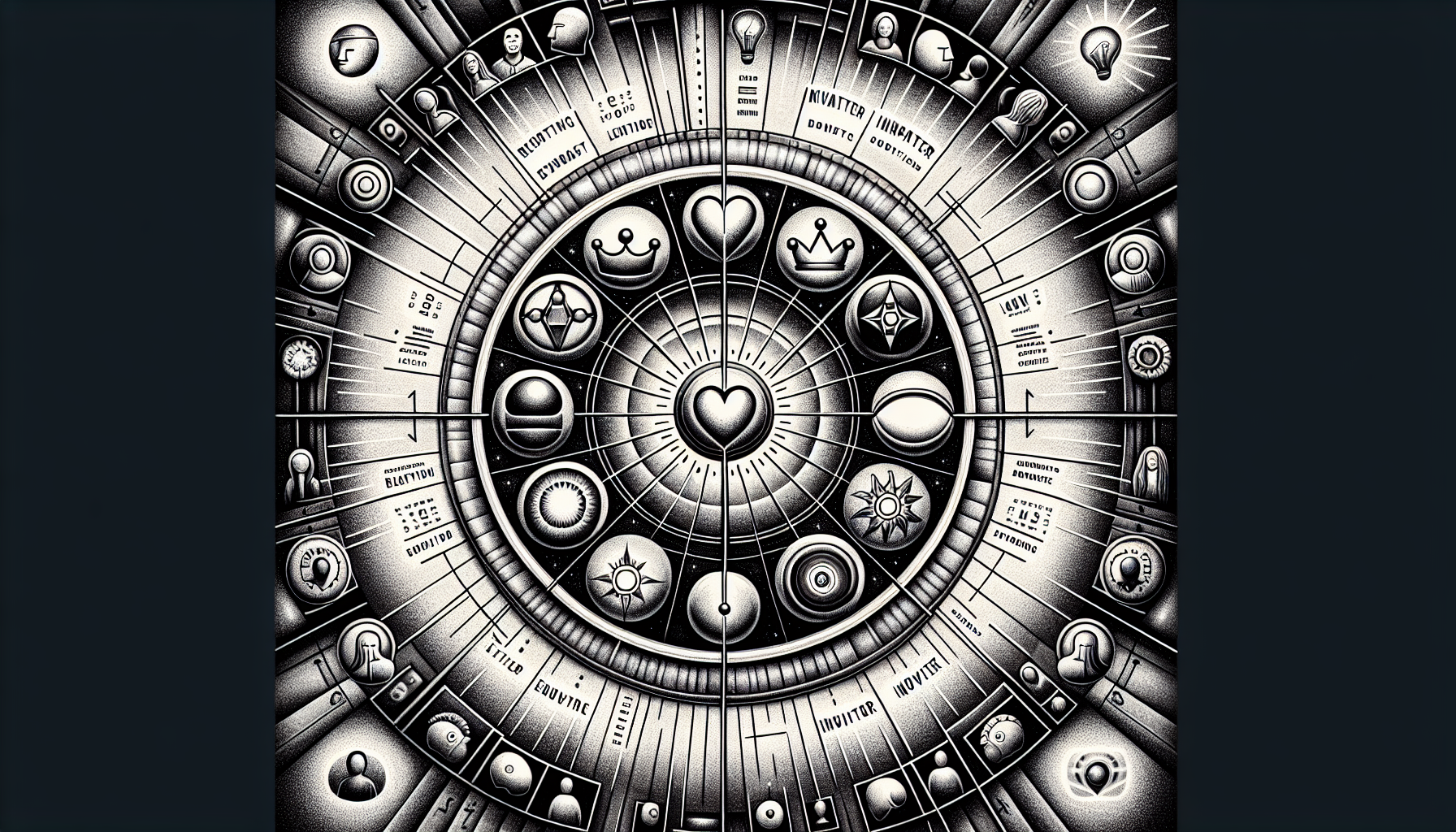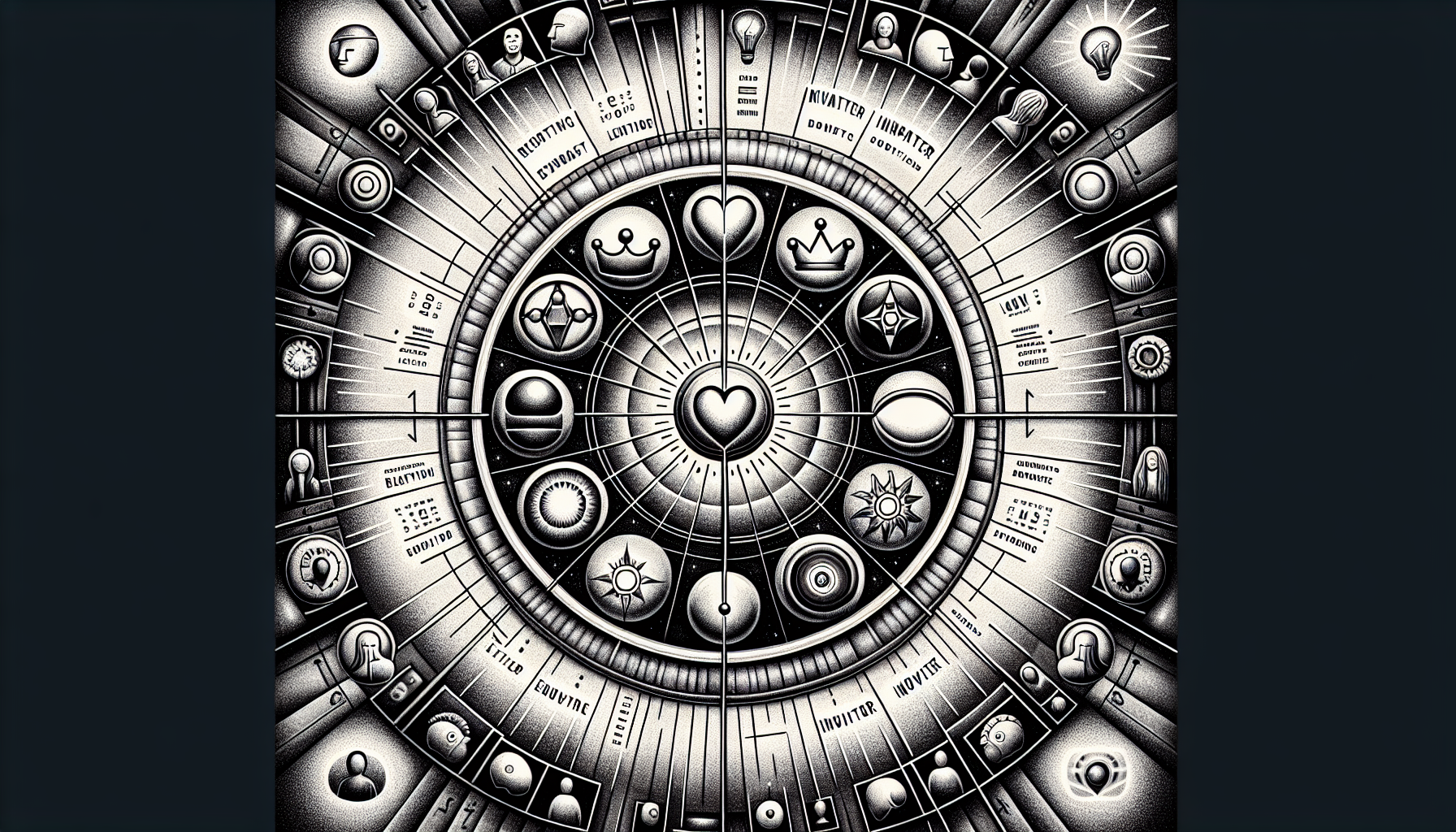In the video titled “Understanding the Power of Brand Archetypes in Building Brand Personality,” you will delve into the world of brand archetypes and discover how they shape brand personality. The video covers the 12 archetypes developed by Carl Jung, discussing their traits and characteristics in detail. You will learn how these archetypes enable brands to connect with their audiences on a personal level. By the end of the video, you will have a deep understanding of all 12 archetypes and their core desires, emphasizing the importance of using archetypes in strategic branding.
Throughout the video, the brand strategist offers valuable tips and techniques for businesses to grow their brands. They also provide a brand archetypes cheat sheet that can be downloaded for free. So, if you want to enhance your knowledge of brand archetypes and discover how they can elevate your brand strategy, this video is a must-watch!

This image is property of i.ytimg.com.
Understanding Brand Archetypes
Brand archetypes are a powerful tool in brand strategy, helping businesses build a distinct brand personality that resonates with their target audience. By understanding and utilizing brand archetypes, businesses can create a connection with their customers on a personal and emotional level.
Definition and Concept of Brand Archetypes
Brand archetypes are a framework that categorizes different brand personalities into identifiable and relatable character types. These archetypes are based on the work of Carl Jung, a renowned psychiatrist who developed the concept of archetypes as universal psychic symbols that are deeply ingrained in our collective unconscious.
In the context of branding, archetypes represent the different roles that brands play in consumers’ lives. They provide a blueprint for creating brand identities by associating specific traits, characteristics, and core desires with each archetype.
Importance of Brand Archetypes in Brand Personality
Brand archetypes are integral to building a strong and cohesive brand personality. They help businesses define their values, voice, and visual representation, allowing them to differentiate themselves from competitors in the market.
By aligning their brand personality with a specific archetype, businesses can evoke emotions and create a connection with their target audience. This connection is crucial in cultivating brand loyalty and attracting customers who resonate with the brand’s values and identity.
Relevance of Brand Archetypes in Building Brand Strategies
Brand archetypes play a vital role in shaping brand strategies. By understanding the traits and characteristics associated with each archetype, businesses can develop effective marketing campaigns that appeal to their target audience.
By leveraging the power of storytelling, businesses can utilize the narrative of a specific archetype to share their brand’s story and values. This storytelling approach helps create a compelling brand narrative that resonates with consumers and influences their purchasing decisions.
Moreover, brand archetypes provide a strategic framework for businesses to craft consistent and authentic brand messaging across various communication channels. By staying true to their chosen archetype, businesses can build brand recognition and establish a unique position in the market.
The 12 Archetypes Developed by Carl Jung
Carl Jung developed 12 archetypes, each representing a distinct personality type. These archetypes serve as a guide for businesses to establish their brand identity and effectively connect with their target audience.
Overview of the 12 Archetypes
The 12 archetypes are as follows:
- The Outlaw: Represents rebellion and non-conformity.
- The Magician: Embodies mystique, transformation, and powerful knowledge.
- The Hero: Symbolizes bravery, determination, and the desire to save the day.
- The Lover: Represents intimacy, sensuality, and the pursuit of relationships.
- The Jester: Embodies humor, spontaneity, and the joy of the present moment.
- The Everyman: Represents relatability, humility, and a down-to-earth nature.
- The Caregiver: Symbolizes compassion, empathy, and the desire to help others.
- The Ruler: Embodies authority, control, and the ability to lead.
- The Creator: Represents artistic expression, innovation, and the desire to bring ideas to life.
- The Innocent: Symbolizes purity, optimism, and a childlike sense of wonder.
- The Sage: Embodies wisdom, introspection, and a thirst for knowledge.
- The Explorer: Represents adventure, curiosity, and the desire to explore new territories.
Traits and Characteristics of Each Archetype
Each archetype possesses distinct traits and characteristics that shape its personality and influence its behavior. These traits are:
- The Outlaw: Rebellious, independent, and non-conformist.
- The Magician: Mystical, powerful, and secretive.
- The Hero: Courageous, determined, and competitive.
- The Lover: Sensual, passionate, and romantic.
- The Jester: Playful, humorous, and spontaneous.
- The Everyman: Relatable, humble, and practical.
- The Caregiver: Compassionate, nurturing, and selfless.
- The Ruler: Authoritative, organized, and influential.
- The Creator: Innovative, imaginative, and visionary.
- The Innocent: Pure, optimistic, and trusting.
- The Sage: Wise, introspective, and knowledgeable.
- The Explorer: Adventurous, curious, and open-minded.
Core Desires of Each Archetype
Along with their traits and characteristics, each archetype carries a core desire. These core desires reflect the deepest motivations and aspirations of the archetype. The core desires are:
- The Outlaw: Freedom and liberation.
- The Magician: Power and control.
- The Hero: Victory and success.
- The Lover: Intimacy and connection.
- The Jester: Joy and laughter.
- The Everyman: Belonging and acceptance.
- The Caregiver: Care and support.
- The Ruler: Authority and influence.
- The Creator: Innovation and self-expression.
- The Innocent: Safety and happiness.
- The Sage: Knowledge and understanding.
- The Explorer: Discovery and new experiences.
The Outlaw Archetype
Overview of the Outlaw Archetype
The Outlaw archetype represents rebellion and non-conformity. It embodies individuals who challenge the status quo, break rules, and pave their own path.
Traits and Characteristics
The Outlaw archetype is characterized by traits such as independence, defiance, and a desire for freedom. Outlaws tend to reject authority, challenge social norms, and seek liberation from constraints.
Examples in Films and Brands
In films, characters like William Wallace in Braveheart epitomize the Outlaw archetype. These characters resist injustice and fight for their freedom.
In terms of brands, Harley Davidson embodies the Outlaw archetype. With its rebellious spirit, non-conformist image, and association with freedom and self-expression, Harley Davidson appeals to those who identify with the Outlaw archetype.
The Magician Archetype
Overview of the Magician Archetype
The Magician archetype represents mystique, transformation, and the power of knowledge. It embodies those who possess a deep understanding of the universe and have the ability to create change.
Traits and Characteristics
The Magician archetype is characterized by traits such as wisdom, intuition, and a sense of mystery. Magicians are often seen as powerful figures who possess secret knowledge and have the ability to transform themselves and the world around them.
Examples in Films and Brands
In films, characters like Gandalf from Lord of the Rings embody the Magician archetype. They possess magical powers, offer guidance, and play a pivotal role in the hero’s journey.
When it comes to brands, Disney exemplifies the Magician archetype. Through its enchanting storytelling, magical characters, and theme parks, Disney creates a sense of wonder and taps into the desire for magical experiences.

The Hero Archetype
Overview of the Hero Archetype
The Hero archetype represents bravery, determination, and the desire to save the day. It embodies individuals who rise above challenges and fight for a greater cause.
Traits and Characteristics
The Hero archetype is characterized by traits such as courage, resilience, and a strong sense of justice. Heroes are often driven by a deep desire to make a difference, protect the weak, and overcome obstacles.
Examples in Films and Brands
In films, characters like Maximus from Gladiator and Luke Skywalker from Star Wars embody the Hero archetype. They embark on heroic journeys, face adversity, and emerge victorious.
Nike is a brand that epitomizes the Hero archetype. Through its “Just Do It” slogan and its association with athletes who push their limits, Nike inspires individuals to be the hero of their own lives.
The Lover Archetype
Overview of the Lover Archetype
The Lover archetype represents intimacy, sensuality, and the pursuit of relationships. It embodies individuals who seek connection, passion, and emotional fulfillment.
Traits and Characteristics
The Lover archetype is characterized by traits such as affection, sensuality, and a focus on relationships. Lovers are often romantic, nurturing, and deeply connected to their emotions.
Examples in Films and Brands
In films, characters like Romeo from Romeo and Juliet or Marilyn Monroe in Some Like It Hot embody the Lover archetype. They are passionate, sensual, and driven by their desire for love.
Victoria’s Secret is a brand that embodies the Lover archetype. With its focus on sensuality, seduction, and intimate apparel, Victoria’s Secret appeals to individuals who prioritize intimacy and connection.

The Jester Archetype
Overview of the Jester Archetype
The Jester archetype represents humor, spontaneity, and the joy of the present moment. It embodies individuals who bring laughter, entertainment, and lightness to the world.
Traits and Characteristics
The Jester archetype is characterized by traits such as playfulness, wit, and a knack for comedy. Jesters often have a talent for making others laugh and bringing joy to people’s lives.
Examples in Films and Brands
In films, characters like the Joker from Batman or Jack Sparrow from Pirates of the Caribbean embody the Jester archetype. They bring humor, mischief, and unpredictability to their stories.
When it comes to brands, companies like Coca-Cola utilize the Jester archetype in their advertising. Through their lighthearted campaigns and emphasis on joy and sharing, Coca-Cola aims to make consumers smile and create a sense of happiness.
The Everyman Archetype
Overview of the Everyman Archetype
The Everyman archetype represents relatability, humility, and a down-to-earth nature. It embodies individuals who are genuine, relatable, and grounded.
Traits and Characteristics
The Everyman archetype is characterized by traits such as authenticity, approachability, and practicality. Everymen are often relatable figures who reflect the values and experiences of the average person.
Examples in Films and Brands
In films, characters like Forrest Gump or Andy Dufresne from The Shawshank Redemption embody the Everyman archetype. They are relatable, humble characters who navigate life’s challenges with resilience.
When it comes to brands, companies like IKEA embody the Everyman archetype. Through their affordable, practical products and their focus on everyday life, IKEA appeals to individuals who value simplicity and functionality.
The Caregiver Archetype
Overview of the Caregiver Archetype
The Caregiver archetype represents compassion, empathy, and the desire to help others. It embodies individuals who provide care, support, and nurturing to those in need.
Traits and Characteristics
The Caregiver archetype is characterized by traits such as kindness, selflessness, and a nurturing nature. Caregivers are often driven by a deep desire to make a difference in the lives of others.
Examples in Films and Brands
In films, characters like Mary Poppins or Atticus Finch from To Kill a Mockingbird embody the Caregiver archetype. They show immense compassion, care, and support to those around them.
Companies like Johnson & Johnson exemplify the Caregiver archetype. Through their focus on health, well-being, and the care of others, Johnson & Johnson creates a sense of trust and reliability.
Conclusion
Understanding brand archetypes is essential in building an effective brand strategy. By identifying and aligning with a specific archetype, businesses can create a unique brand personality that resonates with their target audience.
The power of archetypes lies in their ability to evoke emotions, tell compelling stories, and create a meaningful connection with consumers. By utilizing the traits, characteristics, and core desires associated with each archetype, businesses can craft authentic and cohesive brand messaging.
In today’s competitive market, brands need to go beyond product features and benefits. By leveraging the power of archetypes, businesses can create memorable brand experiences and establish a strong brand identity that sets them apart from competitors.
By understanding the 12 archetypes developed by Carl Jung, businesses can tap into the universal symbols and character types that resonate with consumers on a deep, psychological level. Each archetype offers unique opportunities for storytelling, customer engagement, and brand differentiation.
In conclusion, brand archetypes are a valuable tool in strategic branding. They enable businesses to build a distinctive brand personality, connect with their target audience, and create a lasting and meaningful impact in the marketplace.++++

